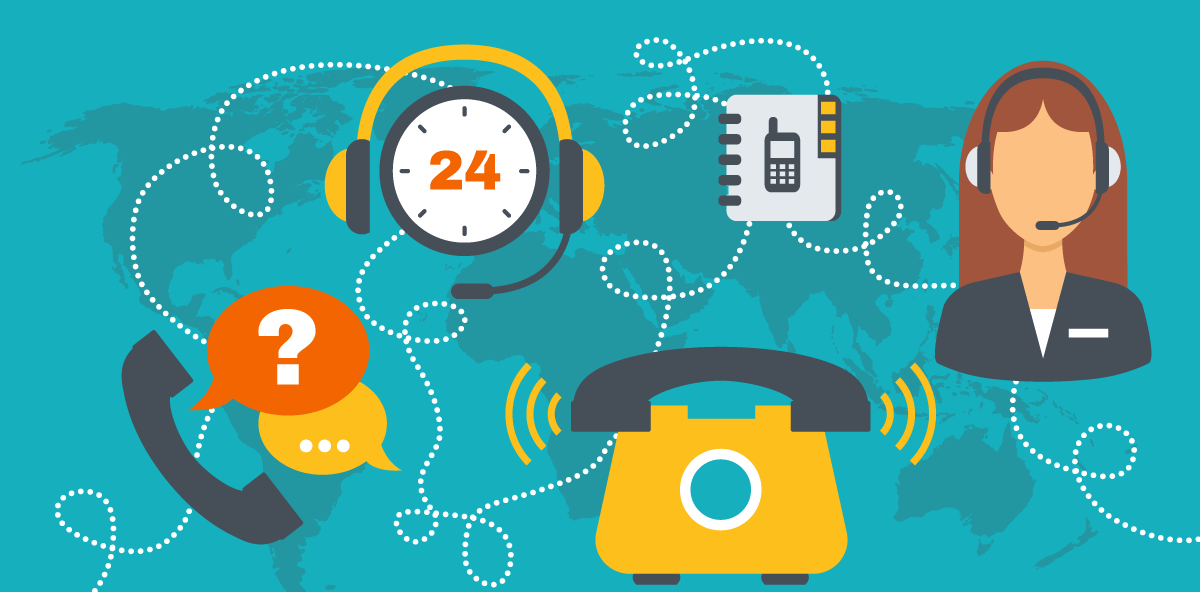
Enhancing Lead Generation with AI in B2B Telemarketing
February 29, 2024
How To Utilize Multi-Channel Lead Generation
March 4, 2024A. Unveiling the Significance of B2B Telemarketing
In the vast realm of business-to-business interactions, telemarketing emerges as a powerful tool for establishing connections and driving growth. Unlike B2C telemarketing, B2B telemarketing requires a nuanced approach, as it involves reaching out to fellow businesses with distinct needs and expectations. Understanding the significance of B2B telemarketing is the first step towards harnessing its potential.
In the contemporary business landscape, where digital communication dominates, telemarketing remains a personal and direct channel. It allows businesses to engage in real-time conversations, building trust and rapport that email or digital campaigns might struggle to achieve. Embracing B2B telemarketing opens doors to opportunities for collaboration, partnerships, and mutual growth.
B. Setting the Stage: Understanding B2B Dynamics
Before delving into the specifics of telemarketing etiquette, it’s essential to comprehend the dynamics of business-to-business interactions. Unlike B2C, B2B transactions often involve complex decision-making processes, multiple stakeholders, and longer sales cycles. Recognizing these nuances is crucial for tailoring telemarketing strategies that align with the intricacies of the B2B environment.
Navigating B2B dynamics requires a strategic mindset, understanding the unique challenges that come with dealing with businesses as clients. From negotiating with procurement departments to aligning solutions with corporate goals, B2B telemarketers must be adept at maneuvering through the complexities inherent in the business-to-business landscape.

The Foundation: Preparing for Success
A. Research and Preparation
The foundation of successful B2B telemarketing lies in meticulous research and preparation. Before picking up the phone, telemarketers must equip themselves with a deep understanding of the prospect’s business, industry trends, pain points, and potential opportunities. This knowledge forms the bedrock upon which persuasive and personalized pitches can be built.
Imagine calling a tech company without knowing their latest product release or addressing a pain point they’ve been grappling with. Research transforms a cold call into a warm conversation, demonstrating to the prospect that you’ve invested time in understanding their world. It’s not just about reading the company’s website; it’s about uncovering the subtleties that can be leveraged for a more impactful conversation.
B. Building Rapport: The Initial Contact
The art of making a memorable first impression is a skill that transcends industries, and in B2B telemarketing, it’s paramount. The initial seconds of a call can determine whether it progresses positively or hits a dead end. Building rapport involves more than just exchanging pleasantries; it’s about establishing a connection that goes beyond the transactional nature of the call.
Begin with a confident and friendly introduction, ensuring that the prospect feels valued from the outset. Acknowledge their time, express gratitude for the opportunity to connect, and subtly align your pitch with their business objectives. Building rapport is a continuous process that extends beyond the initial call, fostering a relationship that forms the basis for future collaborations.
Navigating the Call: Etiquette in Action
A. Active Listening: The Cornerstone of Communication
In the realm of B2B telemarketing, the ability to actively listen is akin to possessing a superpower. It goes beyond merely hearing words; it involves comprehending the nuances, grasping the unspoken cues, and responding thoughtfully. Active listening transforms a call from a monologue to a dialogue, creating an environment where genuine engagement can flourish.
When a prospect speaks, resist the urge to formulate your response while they are still talking. Instead, absorb their message, ask clarifying questions, and demonstrate that their input is valued. This not only enhances the quality of the conversation but also positions you as a telemarketer who prioritizes the client’s needs over a scripted sales pitch.
B. Articulating the Message: Clarity and Conciseness
In the fast-paced world of B2B, time is a precious commodity. Telemarketers must articulate their message with clarity and conciseness, ensuring that every word contributes to the overall impact of the conversation. Avoiding unnecessary jargon and industry buzzwords, while maintaining a professional tone, is key to conveying information in a digestible manner.
Crafting a concise message doesn’t mean sacrificing depth. Instead, it involves distilling complex information into easily understandable insights. Imagine explaining a sophisticated software solution without drowning the prospect in technical details. Clarity and conciseness create a communication style that resonates with busy professionals, making your message not just heard but truly understood.

Overcoming Obstacles: Handling Challenges Gracefully
A. Dealing with Rejections
Rejections are an inevitable part of B2B telemarketing, but mastering the art of handling them can turn setbacks into stepping stones. Instead of viewing a rejection as a closed door, treat it as an opportunity to gather valuable feedback. Understand the reasons behind the rejection, address concerns, and position yourself for a potential future engagement.
Maintaining professionalism during rejections is a testament to your resilience and commitment to building relationships. A positive response to rejection can leave a lasting impression, potentially leading to reconsideration in the future. Remember, it’s not about avoiding rejection but navigating it with grace and using it to refine your approach for future calls.
B. Adapting to Different Personalities
In the diverse landscape of B2B interactions, telemarketers encounter individuals with varying personalities, communication styles, and decision-making approaches. Adapting to these differences is not a one-size-fits-all endeavor but a strategic skill that separates successful telemarketers from the rest.
Tailoring your approach based on the prospect’s personality involves keen observation and the ability to adjust your communication style dynamically. For instance, a direct and results-oriented approach might resonate with some, while others may prefer a more relationship-focused dialogue. Being adaptable ensures that you connect with individuals on a personal level, transcending the generic nature of scripted calls.
Elevating Your Telemarketing Game: Advanced Strategies
A. Harnessing Technology for Efficiency
The evolution of technology has ushered in a new era for B2B telemarketing, offering tools and platforms that enhance efficiency and effectiveness. Artificial Intelligence (AI) tools, for instance, can analyze vast datasets to identify potential leads, predict customer behavior, and even automate routine tasks, allowing telemarketers to focus on building meaningful connections.
Imagine an AI system that sifts through immense databases, highlighting prospects with a higher likelihood of conversion based on historical data. Embracing technology is not about replacing the human touch but augmenting it, allowing telemarketers to work smarter, not harder. Staying updated on the latest communication platforms ensures that you are leveraging the full spectrum of available tools for optimal results.
B. Metrics that Matter: Measuring Success in B2B Telemarketing
In the dynamic world of B2B telemarketing, success is not merely a subjective perception but a measurable outcome. Identifying key performance indicators (KPIs) is essential for gauging the effectiveness of your telemarketing strategies. Metrics such as conversion rates, lead quality, and customer retention provide invaluable insights into the impact of your efforts.
Implementing data-driven strategies involves continuous monitoring and analysis of these metrics. For instance, if your conversion rates are not meeting expectations, examining call scripts, identifying common objections, and refining your approach can lead to significant improvements. Metrics are not just numbers on a spreadsheet; they are the compass guiding telemarketers towards continuous improvement and heightened success.
The Human Touch: Personalization and Relationship Building
A. Tailoring Approaches for Individual Clients
While technology augments efficiency, the human touch remains irreplaceable in B2B telemarketing. Personalization goes beyond addressing a prospect by name; it involves tailoring your entire approach based on the unique characteristics of each client. Imagine receiving a call where the telemarketer not only knows your business but also understands your specific challenges and aspirations.
Customizing pitches for individual clients requires a deep understanding of their industry, pain points, and goals. It involves weaving a narrative that aligns your product or service with their specific needs, creating a connection that transcends the transactional nature of the call. Personalization is the bridge that transforms a cold call into a meaningful conversation, laying the groundwork for lasting partnerships.
B. Follow-up Strategies: Nurturing Relationships Beyond the Call
The journey in B2B telemarketing doesn’t end with the initial call; it’s a continuum that extends into strategic follow-up strategies. Nurturing relationships beyond the call involves a delicate balance between staying on the prospect’s radar and respecting their time and preferences. Imagine receiving a thoughtful follow-up email that addresses specific points discussed in the initial conversation.
Strategic follow-up goes beyond generic messages and involves tailoring your communication based on the prospect’s responses and interactions. Whether it’s sharing relevant industry insights, offering additional resources, or simply checking in to see how their business is evolving, effective follow-up solidifies your position as a trusted partner rather than a mere vendor.
Conclusion
A. Mastering B2B Telemarketing: A Blend of Skill and Etiquette
In the dynamic world of B2B telemarketing, mastering the art requires a delicate blend of skill and etiquette. From the initial research phase to the follow-up strategies, each step plays a pivotal role in building lasting connections and driving business growth. Professionalism isn’t just a checkbox; it’s the guiding principle that elevates B2B telemarketing from a transactional activity to a strategic initiative.
As businesses continue to embrace the power of direct communication, telemarketing remains an indispensable tool for forging connections in the digital age. By weaving together research, rapport-building, active listening, and advanced strategies, telemarketers can navigate the complexities of the B2B landscape with finesse, leaving an indelible mark on each interaction.





